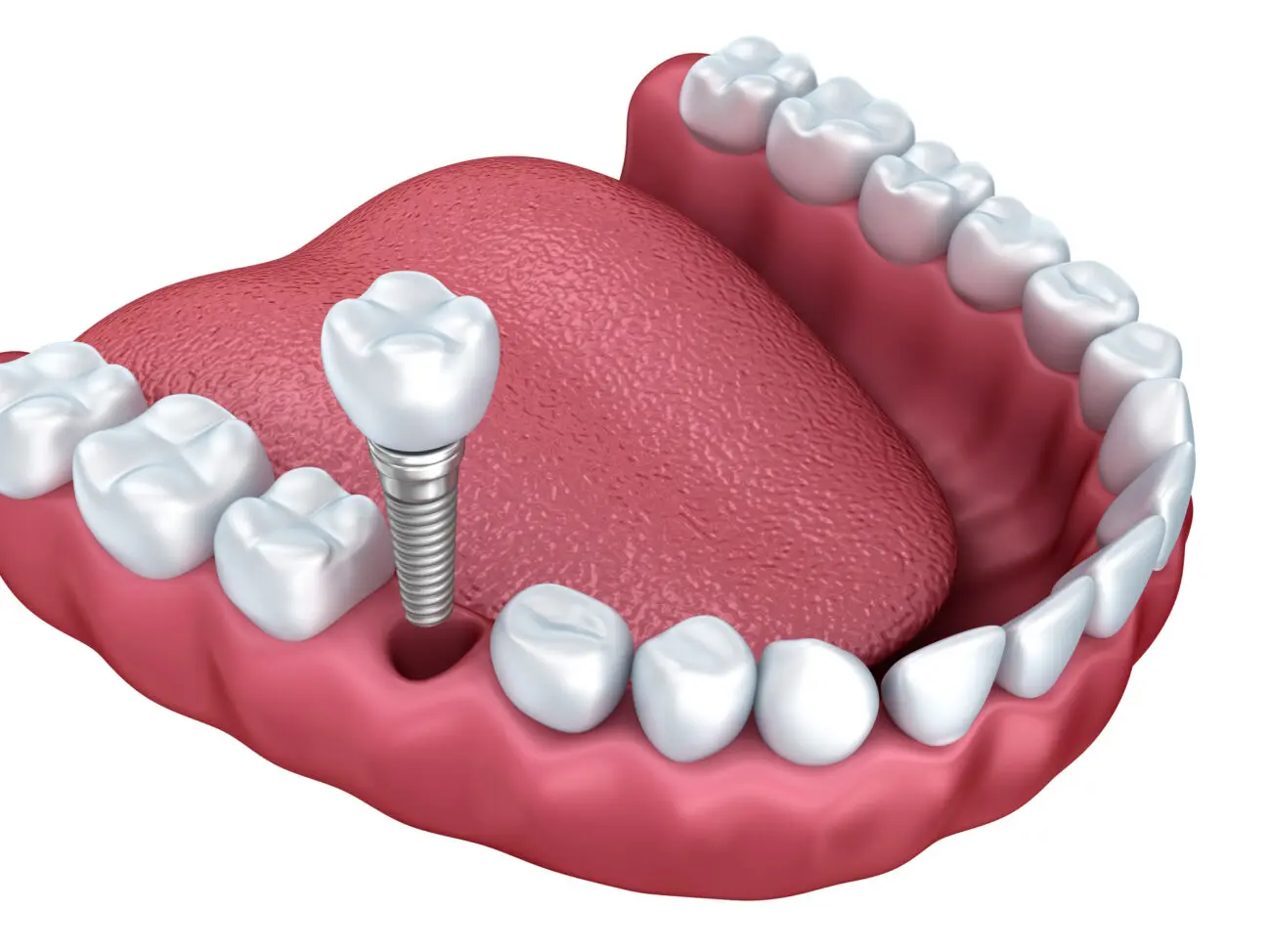An Implant-Supported Crown is an Ideal Solution for Replacing a Missing Tooth
It may be tempting to ignore your missing tooth. How harmful could it be to have one tooth missing? The truth is that a single gap in your smile can lead to many problems. This includes problems biting and chewing food, neighboring teeth shifting or leaning towards the gap, and bone loss in the underlying jaw.
These negative consequences can impact your oral health. Dr. Jason Petekis will suggest an implant-supported crown in Chester Springs, PA to replace your single missing tooth. This solution will improve the appearance of your smile and your oral health.

What is an Implant-Supported Crown?
An implant-supported crown is a dental restoration that replaces a tooth at the root. It comprises three parts: the implant fixture, the abutment, and the dental crown. The dental implant is a small screw-like metal piece that must be inserted into the jawbone via a surgical procedure.
Here, it fuses to the bone, creating a sturdy base for the crown. The abutment is simply the small piece that connects the implant to the crown. The dental crown is the part that resembles a natural tooth. Dr. Petkevis will create a dental crown that matches the color, shape, and size of your surrounding natural teeth.
Dr. Petkevis can secure the crown to the implants in one of two ways:
Cement-Retained Implant Crowns
A cement-retained implant crown provides very good aesthetic results. Your dentist will simply cement the crown to the abutment for a secure fit. The crown is simple to place, making the process less time-consuming. It also requires less vertical space, which can benefit patients with little space between teeth or with high lip lines. It offers much flexibility regarding placement, adjacent teeth, and functionality.
However, one of the main disadvantages is that the cemented crown is difficult to remove. It will require drilling and risks damaging the crowns. If the crown needs to be removed for maintenance, if the abutment or the implant needs attention, it will be difficult to reach them. Also, when the dentist sets the crown, cement remnants can be left behind. This can lead to gum irritation and possibly an infection.
Screw-Retained Dental Crowns
A screw-retained crown offers a very secure fit. Your dentist will screw the crown to the abutment using a tiny screw. With this method, your dentist can easily retrieve the dental crown if they need to access the dental implant, abutment, or repair it. It also provides a very predictable and precise fit. The crown will never come loose or dislodge, making it efficient and comfortable. This also ensures long-term durability. They are easier to care for compared to cement-retained crowns.
However, they have limitations when it comes to aesthetics, especially when there is little space for a screw access hole or if the crown requires a lot of customization. This type of crown needs more vertical space because of the screw hole, and it is simply not feasible sometimes. The placement of this type of crown can be complicated and time-consuming. It requires precise alignment. It can negatively affect your bite if it is off by even a little.
Implant-Supported Crown vs. Dental Bridge
An implant-supported crown offers several benefits over a dental bridge. Firstly, unlike a dental bridge, it does not rely on adjacent teeth for support. This solution preserves your natural tooth structure by not requiring alteration to secure the restoration.
Secondly, an implant-supported crown replaces the tooth at the root. The implant not only provides good stability and durability for the crown, but it also mimics a natural tooth root. This will prevent bone loss in the jaw.
However, a dental bridge is a less expensive solution. As the more affordable dental restoration, many patients choose a dental bridge. The treatment time is also much shorter. It can take several months to a year to get an implant-supported crown, while a dental bridge can be completed in about a month.
